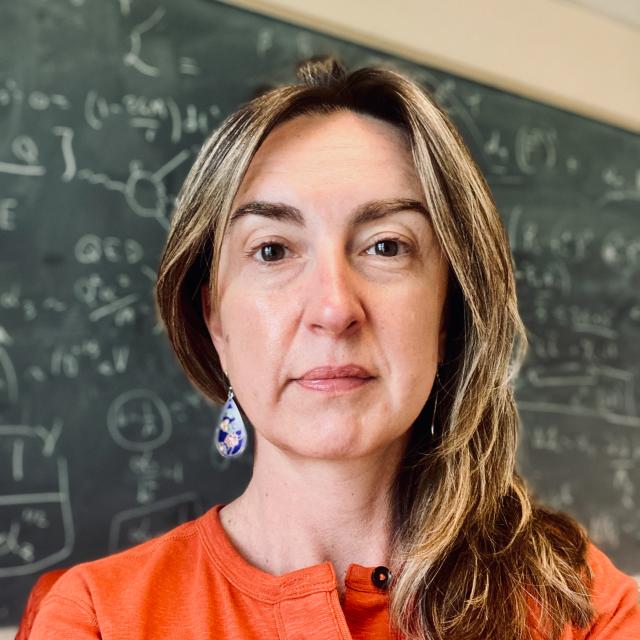Professor Cremonini’s research program has addressed a variety of aspects of quantum gravity, quantum field theory and early universe cosmology. Her current research focuses on the holographic gauge/gravity duality, which gives us a window into the microscopic structure of spacetime and black holes. She also uses string theory techniques to probe the dynamics of strongly correlated quantum systems and emergent phases of matter. Cremonini’s work is funded by the National Science Foundation as well as Lehigh University.


Sera Cremonini
Associate Professor
PhD in Physics, Brown University 2006
Explore this Profile×
Research Areas
Additional Interests
- The holographic gauge gravity duality
- Strongly correlated phases of matter
- Early universe cosmology
Research Statement
Biography
Sera Cremonini received her Ph.D. in Physics from Brown University in 2006. She held a postdoctoral position with the Michigan Society of Fellows at the University of Michigan, Ann Arbor from 2006 to 2009. In 2009 she started her second postdoctoral position, joint between Texas A&M University and Cambridge University. Cremonini joined the faculty at Lehigh in 2015. Her research examines various aspects of quantum gravity and quantum field theories, ranging from fundamental properties of black holes and the emergence of spacetime to applications to strongly correlated phases of matter.
Selected Publications:
“On Asymptotic Dark Energy in String Theory,” Sera Cremonini, Eduardo Gonzalo, Muthusamy Rajaguru, Yuezhang Tang, Timm Wrase. e-Print: 2306.15714.
“Mass and force relations for Einstein-Maxwell-dilaton black holes,” Sera Cremonini, Mirjam Cvetic, Christopher N. Pope, Aninda Sinha. Phys. Rev. D 107 (2023) 12, 126023, e-Print: 2304.04791.
“Breaking rotations without violating the KSS viscosity bound,” Matteo Baggioli, Sera Cremonini, Laura Early, Li Li, Hao-Tian Sun. JHEP 07 (2023) 016, e-Print: 2304.01807
“Repulsive Black Holes and Higher-Derivatives,” Sera Cremonini, Callum R. T. Jones, James T. Liu, Brian McPeak, Yuezhang Tang. JHEP 03 (2022) 013, e-Print: 2110.10178.
“Higher-Derivative Corrections to Entropy and the Weak Gravity Conjecture in Anti-de Sitter Space,” Sera Cremonini, Callum R. T. Jones, James T. Liu, Brian McPeak. JHEP 09 (2020) 003, e-Print: 1912.11161.
“Spectral Weight Suppression and Fermi Arc-like Features with Strong Holographic Lattices,” Sera Cremonini, Li Li, Jie Ren. JHEP 09 (2019) 014, e-Print: 1906.02753.
“On the IR completion of geometries with hyperscaling violation,” Jyotirmoy Bhattacharya, Sera Cremonini, Annamaria Sinkovics. JHEP 02 (2013) 147, e-Print: 1208.1752.
“Decoupling Survives Inflation: A Critical Look at Effective Field Theory Violations During Inflation,”
Anastasios Avgoustidis, Sera Cremonini, Anne-Christine Davis, Raquel H. Ribeiro, Krzysztof Turzyński, Scott Watson. JCAP 06 (2012) 025 e-Print: 1203.0016
“Strongly Coupled Perturbations in Two-Field Inflationary Models,” Sera Cremonini, Zygmunt Lalak, Krzysztof Turzynski. JCAP 03 (2011) 016, e-Print: 1010.3021
“The Shear Viscosity to Entropy Ratio: A Status Report,” Sera Cremonini. Mod. Phys. Lett. B 25 (2011) 1867-1888, e-Print: 1108.0677
Teaching
I teach courses across all levels, from freshman seminars to graduate classes:
- Mathematical Methods (PHY 428, graduate level course on standard mathematical methods for physicists)
- General Relativity (ASTR/PHY 342, General Relativity course for upper-level undergraduates and beginning graduate students)
- Introduction to String Theory (PHY 366, quantum mechanics-based course for upper-level undergraduates and beginning graduate students)
- From Black Holes to Strings: The Early Universe and the Nature of Space-Time (PHY 90, seminar style course for freshman students)
- Quantum Mechanics I (PHY 362, quantum mechanics course for upper-level undergraduates)
- Independent studies on Quantum Field Theory and String Theory (seniors and beginning graduate students)
